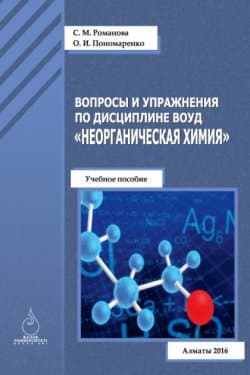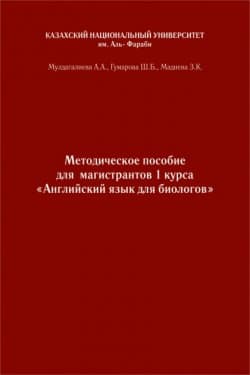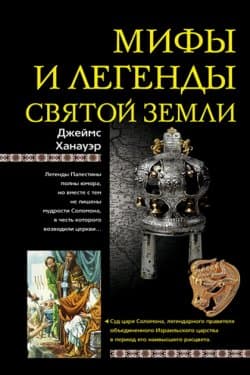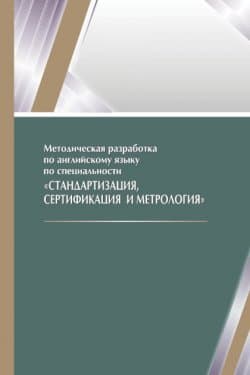Методическая разработка по английскому языку по специальности «Стандартизация, сертификация и метрология» - Баян Исабаева, Джамиля Махметова, Роза Апекова (2015)
-
Год:2015
-
Название:Методическая разработка по английскому языку по специальности «Стандартизация, сертификация и метрология»
-
Автор:
-
Жанр:
-
Язык:Русский
-
Издательство:КазНУ
-
Страниц:6
-
ISBN:978-601-04-1455-6
-
Рейтинг:
-
Ваша оценка:
Настоящее учебное пособие предназначено для подготовки бакалавров и магистров по специальности «стандартизация, сертификация и метрология».
При отборе аутентичных текстов по предмету использовался глоссарий терминов, способствующий обогащению словарного запаса наиболее важными аспектами данной области, а также проверке навыков и умений изучаемого материала в течение определенного периода времени.
Метрология, стандартизация, сертификация это 3 взаимосвязанные области знаний, которые являются важными устройствами в обеспечении качества провианта кроме того услуг.
Методическая разработка по английскому языку по специальности «Стандартизация, сертификация и метрология» - Баян Исабаева, Джамиля Махметова, Роза Апекова читать онлайн бесплатно полную версию книги
A core concept in metrology is metrological traceability, defined by the BIPM as «the property of the result of a measurement or the value of a st andard whereby it can be related to stated references, usually national or international standards, through an unbroken chain of comparisons, all having stated uncertainties)). The level of traceability establishes the level of comparability of the measurement: whether the result of a measurement can be compared to the previous one, a measurement result a year ago, or to the result of a measurement performed anywhere else in the world.
Traceability is most often obtained by calibration, establishing the relation between the indication of a measuring instrument and the value of a measurement standard. These standards are usually coordinated by national metrological institutes: National Institute ofStandards and Technology,National Physical Laboratory, UK, etc. Traceability is used to extend measurement from a method that works in one regime to a different method that works in a different regime. An example would be the measurement of the spacing of atomic planes in the same crystal specimen using both X-rays and an electron beam. Traceability also refers to the methodology used to calibrate various instruments by relating them back to a primary standard. Traceability, accuracy, precision, systematic bias, evaluation of measurement uncertainty are critical parts of a quality management system. Mistakes can make measurements and counts incorrect. Even if there are no mistakes, nearly all measurements are still inexact. The term «error» is reserved for that inexactness, also called measurement uncertainty. Among the few exact measurements are:
– The absence of the quantity being measured, such as a voltmeter with its leads shorted together: the meter should read zero exactly.
– Measurement of an accepted constant under qualifying conditions, such as the triple point of pure water: the thermometer should read 273.16 Kelvin (0.01 degrees Celsius, 32.018 degrees Fahrenheit) when qualified equipment is used correctly.
– Self-checking ratio metric measurements, such as a potentiometer: the ratio in between steps is independently adjusted and verified to be beyond influential inexactness.
All other measurements either have to be checked to be sufficiently correct or left to chance. Metrology is the science that establishes the correctness of specific measurement situations. This is done by anticipating and allowing for both mistakes and error. The precise distinction between measurement error and mistakes is not settled and varies by country. Calibration is the process where metrology is applied to measurement equipment and processes to ensure conformity with a known standard of measurement, usually traceable to a national standards board.
Ex. 2. Answer the questions
1. What is metrological traceability ?
2. What does the level of comparability of the measurement mean?
3. What are the critical parts of management quality system ?
4. What is the term «error» reserved for ?
5. What organizations coordinate standards ?
Ex. 3. Are these sentences true or false ?
1. Traceability is most often obtained by evaluation.
2. Metrological traceability was defined by the UN.
3. Metrological traceability is a core concept in metrology.
4. All other measurements either have to be checked to be sufficiently correct or left to chance.
5. Errors can make measurements and counts incorrect.
6. The precise distinction between measurement error and mistakes has been already settled.
7. Calibration is a process where metrology is not applied to measurement equipment.
Ex. 4. Fill the blanks using the following words: establishment, instrument, correctness, to achieve, calibration, term, standard, metrological, key
 Вопросы и упражнения по дисциплине ВОУД «Минеральное сырье. Безотходная технология» Романова София
Вопросы и упражнения по дисциплине ВОУД «Минеральное сырье. Безотходная технология» Романова София
 Вопросы и упражнения по дисциплине ВОУД «Неорганическая химия» София Романова, Оксана Пономаренко
Вопросы и упражнения по дисциплине ВОУД «Неорганическая химия» София Романова, Оксана Пономаренко
 Английский язык. Учебно-методическое пособие к практическим занятиям для биологов бакалавриата и магистратуры З. Мадиева, Шолпан Гумарова, Айжан Мулдагалиева
Английский язык. Учебно-методическое пособие к практическим занятиям для биологов бакалавриата и магистратуры З. Мадиева, Шолпан Гумарова, Айжан Мулдагалиева
 Мифы и легенды Святой земли Джеймс Ханауэр
Мифы и легенды Святой земли Джеймс Ханауэр
 Платон. Избранное Платон
Платон. Избранное Платон
 Соперница Нора Робертс
Соперница Нора Робертс

 Пир теней
Пир теней  Князь во все времена
Князь во все времена  Когда порвется нить
Когда порвется нить  Пока я здесь
Пока я здесь 



















